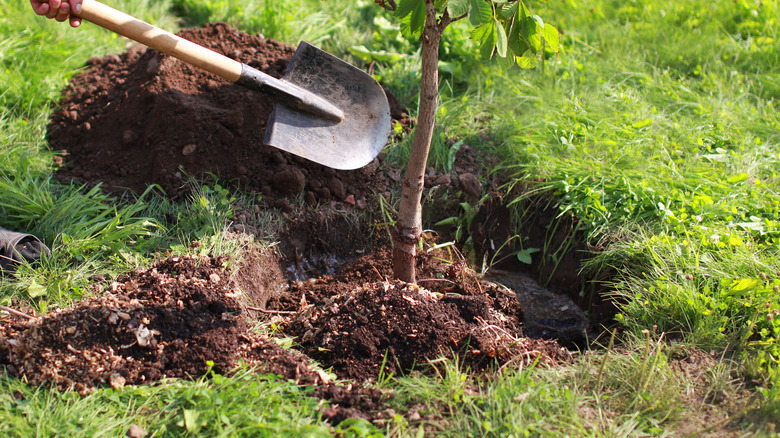If your trees don’t look in their best form, you may wonder what’s wrong with them. Mulch and landscaping fabric can help plants thrive if you use them correctly, but too much of it can end up having a negative impact. As a result, this may cause your trees to look dull and withered, and you may notice telltale signs such as discolored leaves and wilting. These are all giveaway signs that they’re hindering how much nutrients and oxygen your tree has access to — both are elements a plant needs in order to be healthy.
To find out if mulch and landscaping fabric are the culprits, simply dig around the base of your tree until you reach the flare. If you find any fabric near the base, you can be certain that one of these elements, or both, is to blame. So, how can you return your tree to its former glory? Let’s take a look.
Remove the mulch or fabric

To get your tree back in good shape, you need to get rid of any build-up of mulch and fabric around its base. However, what steps should you take when planting or re-adjusting a tree? If you can replant it, make sure that you level out the soil until the flare is just marginally beneath the surface of your soil or just on top of it, with no landscaping fabric near the base. This is a routine step that you should take when preparing to plant a new tree and something to always check for if you have a landscaped garden. However, if you cannot replant it, encouraging healthy soil around the area should help replenish your tree. Still, if you don’t notice any improvement over a substantial period, there may be another issue that needs to be identified.
Not only can landscaping fabric damage your trees, but too much of it can also be harmful to worms in the area. Without them, it may be even more difficult for your trees to stay in good health. If you want to incorporate landscaping fabric into your garden, make sure you enquire with professionals first. This way, you can avoid any unwanted impacts and grow healthy trees as part of a thriving garden.

